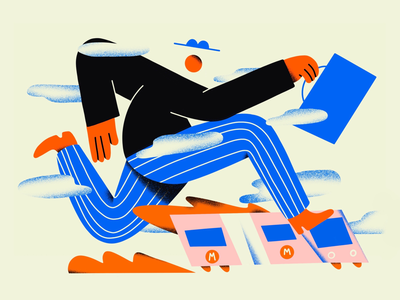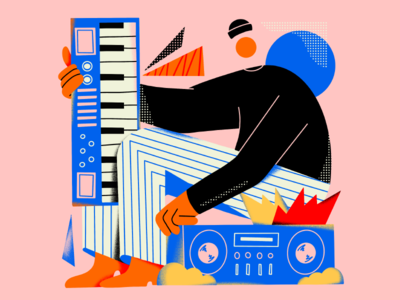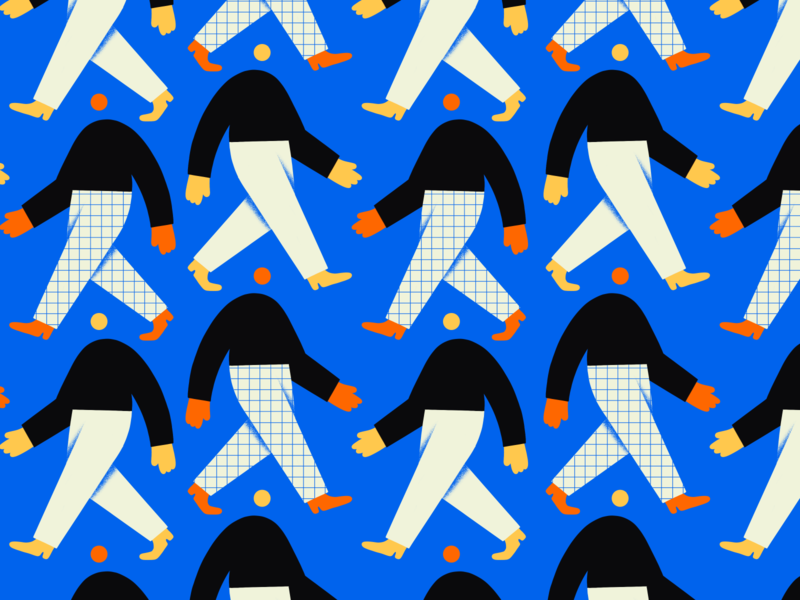Just five years ago, Spencer Gabor was pursuing a degree completely unrelated to the arts. Fast forward to today, he’s illustrating and designing for some of the largest brands around the world. Find out how Spencer made this unexpected career change, and get inspired to pursue your own true calling.
Hello! My name is Spencer Gabor, I’m an illustrator and Junior Art Director living in Brooklyn, New York. Through freelance projects and an agency, I am grateful to be currently making stuff for NPR, Marcus by Goldman Sachs, Underpinned and a slew of other rad companies.
How did you get started in design & illustration?
My story is a little different. Four years ago, I was a business major in school and heading in the complete opposite direction of where I wanted to be. Why? To be honest, I don’t know for sure. I was an artist my whole life but I guess I just had a fearful assumption that pursuing it was a fantasy that only a few got to succeed in. Maybe I was worried I wasn’t good enough, that I wouldn’t make enough money, or a little of both. I’m not completely sure.
By the beginning of my junior year, I was filling up more Moleskine sketchbooks than I could keep up with. My notebooks had no notes, but hundreds of doodles instead. During this time, I watched my peers begin to really excel in their business-related fields while I couldn’t find any sort of drive to do the same. I eventually hit a mental breaking point and knew something had to change.
I continued with my degree, but spent every second outside of class drawing, learning the Adobe Suite, and hopping on any possible project I could. This included reaching out to start-ups at my school and pro-bono projects just so I could get the inklings of a portfolio together.
To be honest, at first I was making loads and loads of bad work, and I would send this bad work to any industry professional that would respond to my emails asking for a critique. Bad portfolio after bad portfolio, I kept putting together collections of work until the feedback finally became positive. This taught me more than I think any art program could have, and I wasn’t feeling any sort of burnout from other people’s assignments, deadlines, etc. Sure there was a lot of self-doubt, frustration, and uncertainty — but these lows were just part of following a passion.
This process was long, but some of the most fulfillment I’ve ever felt. Because I was able to take what I was already doing during my free time to unwind (illustration and design) this lengthy process never felt like “work,” but instead an obsession over a hobby. Finally, something started clicking as I began to grow my social media following and receive emails for actual work.

How would you describe your style? Tell us about how it has developed over time.
Finding my style was the hardest part and something I’ll probably always be looking to strengthen. I’d say mine uses lots of bright colors but with a limited pallet and big expressive characters with simple little faces and heads, or no faces at all. I love trying to show expression without facial expressions if that makes sense.
Finding a style was super daunting. You basically have to ask yourself, “How can I draw this thing like no one else has ever drawn it before?” My first instinct was to look at my favorite artists for inspiration but I think that was probably a mistake. At first, my work looked like it belonged to someone else and it was pretty frustrating. I talked to a couple of my favorite illustrators for advice online and found that my approach was backward. They mentioned that to find your style, you should look inside yourself to pick out what’s different about you and bring that into your work. That might sound a little cheesy, but it definitely helped.
Tell us about another creative practitioner who has played an instrumental role in your career.
As a kid, I’ve always gravitated towards the Keith Haring-types rather than hyper-realism because I liked the idea of saying a lot while using a little. Today, I’m still into the same kind of thing and follow 300+ artists, photographers, cartoonists, etc on Dribbble and Instagram who use their own unique style to make some sort of statement.
What else are you passionate outside of the arts? How does it influence your work?
I’m pretty big into mental health issues and being open about how you’re feeling. I think this idea definitely pops up in my work from time to time. Art can do a really cool job of destigmatizing things and making something ‘normal’, or at least talked about.
Also, I know this is considered an art, but I love stand-up comedy. It’s always a good reminder to not take myself or my work too seriously. Lastly, I’ve always played sports, but usually the more obscure ones like volleyball and skateboarding. This has influenced my work because I find the poses and shapes people make while playing sports can be interesting and fun for illustration.
Do you have any advice for folks wanting to make a drastic career transition?
It’s going to be a process with a lot of ups and downs because you’ll essentially have to catch up with people who have been doing something their entire life. But if the passion is there, it won’t feel like work and can be full of so much excitement.
People like to glorify the idea of ‘hard work’ but I don’t really buy that. For instance, a bodybuilder who goes to the gym every day, sticks to a diet, etc, isn’t necessarily working hard, but just following their passion and whatever happens to excite them. The same should go for a career you’re passionate about, the process should be enjoyable.
Also, I don’t think a drastic career transition needs to happen in one big dramatic decision. There’s definitely value in working to keep yourself financially comfortable while using the free time you have to pursue your passion as you begin to transition.
I continued my business degree because it offered a safety net in case the whole thing didn’t work out. If it wasn’t for this, I don’t know if I would have had the mental wellbeing to be as patient as I was through the learning process necessary for breaking into the art and design world. I’ve always thought a clear head that isn’t bogged down by thoughts about rent, food, etc allows you to take more risks within your work rather than working out of desperation.
Want to keep up with Spencer? Find him on Dribbble, Instagram, and at spencergab.com.
Find more Interviews stories on our blog Courtside. Have a suggestion? Contact stories@dribbble.com.


















